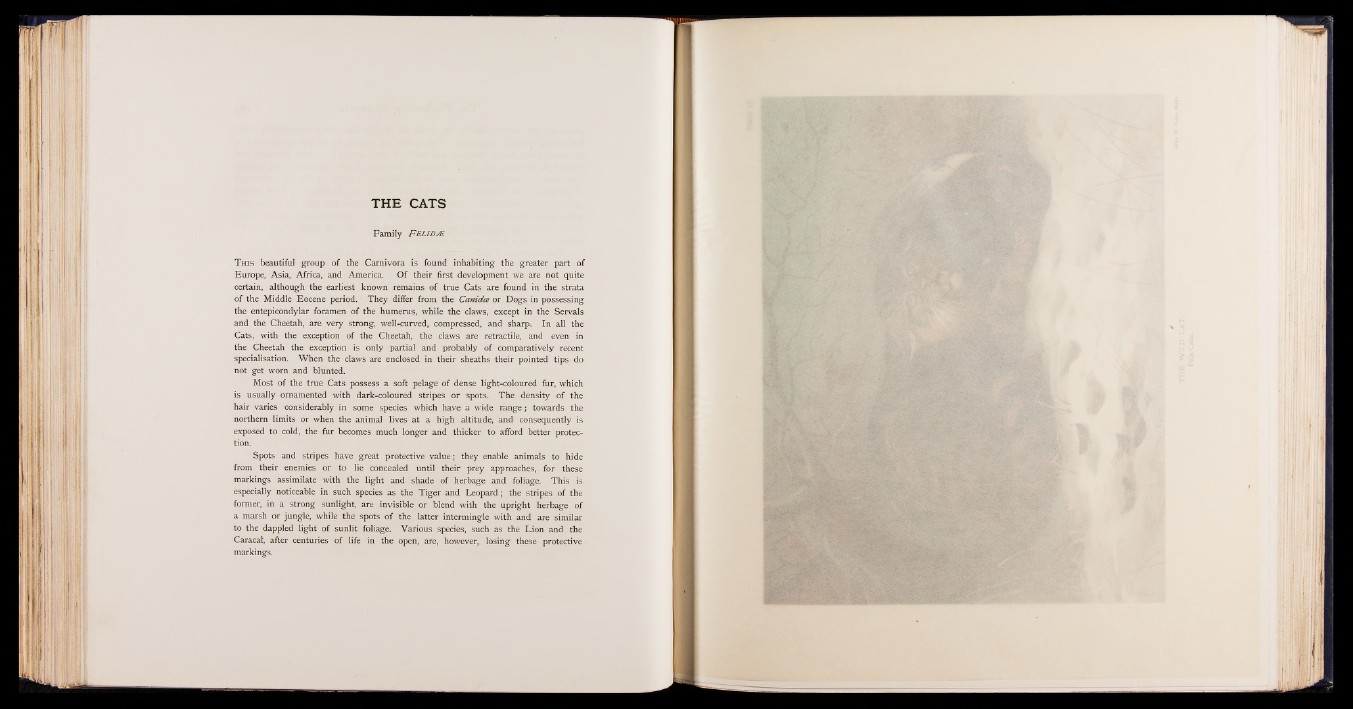
THE CATS
Family F e l id j e
T h i s beautiful group of the Carnivora is found inhabiting the greater part of
Europe, Asia, Africa, and America. Of their first development we are not quite
certain, although the earliest known remains of true Cats are found in the strata
of the Middle Eocene period. They differ from the Canidee or Dogs in possessing
the entepicondylar foramen of the humerus, while the claws, except in the Servals
and the Cheetah, are very strong, well-curved, compressed, and sharp. In all the
Cats, with the exception of the Cheetah, the claws are retractile, and even in
the Cheetah the exception is only partial and probably of comparatively recent
specialisation. When the claws are enclosed in their sheaths their pointed tips do
not get worn and blunted.
Most of the true Cats possess a soft pelage of dense light-coloured fur, which
is usually ornamented with dark-coloured stripes or spots. The density of the
hair varies considerably in some species which have a wide range; towards the
northern limits or when the animal’ Jives at a high altitude, and consequently is
exposed to cold, the fur becomes much longer and thicker to afford better protection.
Spots and stripes have great protective value; they enable animals to hide
from their enemies or to lie concealed until their prey approaches, for these
markings assimilate with the light and shade of herbage and foliage. This is
especially noticeable in such species as the Tiger and Leopard; the stripes of the
former, in a strong sunlight, are invisible or blend with the upright herbage of
a marsh or jungle, while the spots of the latter intermingle with and are similar
to the dappled light of sunlit foliage. Various species, such as the Lion and the
Caracal; after centuries of life in the open, are, however, losing these protective
markings.